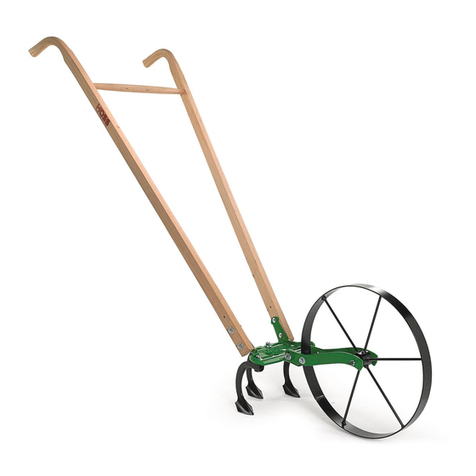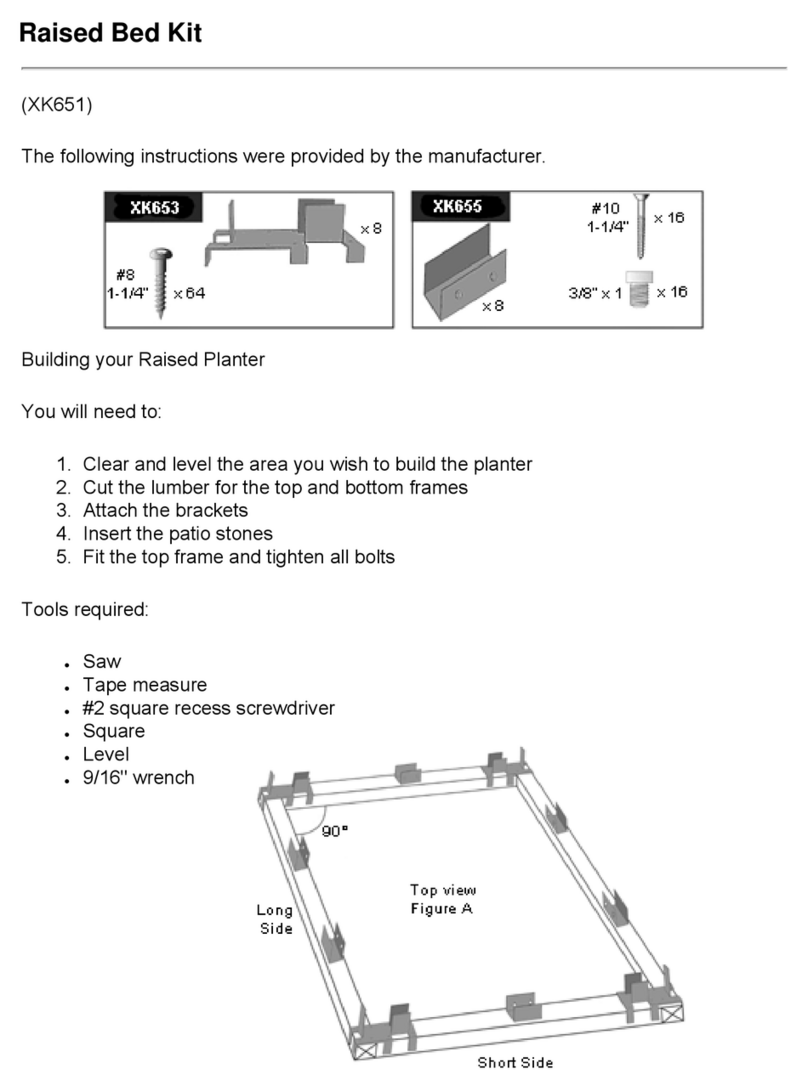
Connecting to the Supply Cylinder
The propane supply cylinder used with this torch should be no less than 12 lb.
capacity and must be designed, fabricated, tested and marked in accordance with
regulations of the U.S. Department of Transportation, the Canadian Transport
Commission or the Interstate Commerce Commission. This torch is designed for a
vapor withdrawal LP-Gas cylinder.
Inspect the nut and nipple of the P.O.L. connection on the LP-Gas hose.
O-ring should be present. Check for dents or physical damage. If physical
damage is evident call for replacement parts.
1.
Be certain the supply cylinder valve is fully turned off. Remove the protective
plastic plug from the cylinder valve outlet connection.
2.
Connect the P.O.L. (nut/nipple) fitting on the hose to the propane supply
cylinder by turning the left-hand, threaded, P.O.L. nut counter clockwise into
the cylinder valve outlet. Snug the connection tight.
DO NOT OVERTIGHTEN.
3.
Slowly open the cylinder valve. Check all LP Gas connections for leaks using
soapy water or suitable leak detection solution. DO NOT USE MATCHES OR
OPEN FLAME TO CHECK FOR LEAKS. Do not attempt to operate the torch
if there is evidence of a leak or at any time the odor of gas is detected.
4.
IMPORTANT NOTE
The P.O.L. contains an integral flow-check valve. Opening the LPGas cylinder
valve rapidly can cause the valve to check. If the P.O.L. flow valve checks,
close the LP-Gas cylinder valve, wait 10-15 seconds and slowly open the LP-
Gas cylinder valve.
If no leaks are found, proceed with lighting the torch.•
Always use a flint lighter to ignite the torch. DO NOT USE MATCHES OR
CIGARETTE LIGHTER TO IGNITE THE TORCH.
•
Be certain the flame adjusting valve is closed before opening the LP-Gas
cylinder valve.
•
Familiarize yourself with the functions of the flame adjusting needle valve.
The round knob, marked with arrows "off" and "on," is the adjustment valve
for lighting the torch and adjusting the flame.
1.
Be certain the flame adjusting valve is closed before opening the LP-Gas
cylinder valve.
2.
Slowly open the LP-Gas cylinder valve. Check all gas connections to the
torch for leaks with a leak detection solution, such as soapy water. Leaks will
be indicated by forming bubbles around the source. Please allow one minute
for bubbles to appear. Repair all leaks and test for leaks prior to lighting torch.
3.
Open the flame adjusting valve (the round knob) 1/8 turn or until a small
amount of gas is heard escaping. Using a flint lighter, ignite the torch. DO
NOT PLACE YOUR HAND OR ANY PART OF YOUR BODY IN THE PATH
OF THE BURNER WHILE LIGHTING OR OPERATING THE TORCH. DO
NOT USE MATCHES OR CIGARETTE LIGHTER TO IGNITE THE TORCH.
4.
Adjust the size of the flame by using the flame adjusting valve.
























